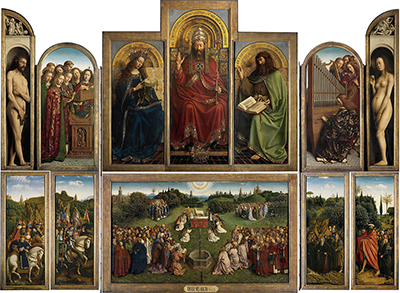 Buy Art Prints Now
Buy Art Prints Nowfrom Amazon
* As an Amazon Associate, and partner with Google Adsense and Ezoic, I earn from qualifying purchases.
In producing the Ghent Altarpiece, Hubert and Jan van Eyck would gift the world one of the finest artworks in European history
This complex polyptych remains on display at St Bavo's Cathedral, Ghent, Belgium. The piece is constructed from a series of individual paintings that come together in this format that was common during the Renaissance. The use of folding wings would mean that the artists would have to paint both the front and back, to allow for when it was open and closed.
Hieronymus Bosch's triptych titled The Garden of Earthly Delights is perhaps the most famous of all artworks in this format, but van Eyck's work with his brother in Ghent represents another highly signifcant contribution to early Flemish art. One can appreciate this work as a series of individual paintings, or as a whole.
Polyptyches tend to be a series of connected artworks displayed across the panels with the central front side being the main focal point, with the wings providing supporting artwork. Much research has been completed on this significant artwork due to its beauty and artistic importance. Historians have generally concluded that it would have initially been constructed by Hubert, before Jan would then complete the panel paintings themselves. To have two such talented artists in the same family seems extraordinarily unlikely but actually can be found again with the Bruegels, the Bellinis and the Carraccis.
The two brothers were commissioned to produce this central piece as part of a larger overhaul of the Saint Bavo Cathedral chapel. The donors were Ghent mayor Jodocus Vijd and his wife Lysbette and the completed piece was unveiled to much excitement on the 6th of May, 1432. The specific involvement of the two brothers has proven difficult to distinguish but most accept that Jan did considerably more of the panel work after Hubert had initially set up the blank polyptych.
The style used by the brothers here is in keeping with the changing art world during this time, with a far greater concentration on the accurate depiction of humans and nature than had been seen in the Gothic and Byzantine periods. The Van Eycks would play a significant role themselves in forcing this change during their own careers.
Since being completed in 1432 the altarpiece has unfortunately been damaged on several occassions. The single inscription that explains the timing of their individual roles has also been lost. There is some belief that the original piece would have included clockwork mechanisms for opening and closing the wings plus perhaps even playing music. It is hard to see how these theories can be confidently proved or disproved in the present day, with so much time having passed since it would have been in full working order.
The individual elements of the altarpiece would have taken considerable work to complete, even if the two brothers worked together on some of them. For Jan to complete the panels in around two years it is highly unlikely that he would have taken on any other commissions during this period and would have concentrated solely on this highly prestigious and complex commission. Some of the highlights found below include the central Deësis of Christ the King, Virgin Mary and John the Baptist plus St John the Baptist and St John the Evangelist. Large depictions of Adam and Eve are also worthy of note.
A significant issue in the campaign to understand more about each artist's specific contribution to this piece is that very little evidence has been found around Hubert's style. With little available information on his work, it is very hard to confidently distinguish between the two brothers. Historians' only option was to find any elements of the Ghent Altarpiece that varied widely from Jan's other attributed works - perhaps these could be the work of his brother?
Scientific research has suggested that several of the panels were completed after Hubert's death, again giving us further clues but no definite answer that covers all of the artwork. These later additions predominatly involved the wings, with the central area already completed.
Van Dyck was normally tasked with completing commissions for private individuals who would take the completed work into their own home or perhaps gift to another. This altarpiece was entirely intended as a gift for public consumption and that is perhaps why the artist chose to slightly diverge from his normal style. In this case you will find a careful use of oils and transparent glazes which enabled Van Eyck to produce light effects and shadows across multiple elements of his compositions.
There is a greater bias towards natural scenes here, too, when normally religious themes would dominate all else. Despite being background elements, his fountains, churches and sprawling landscapes were not short in detail, receiving as much care as any figure in the foreground. Again, comparisons can be drawn with the work of Hieronymus Bosch and perhaps Pieter Bruegel the Elder, too.
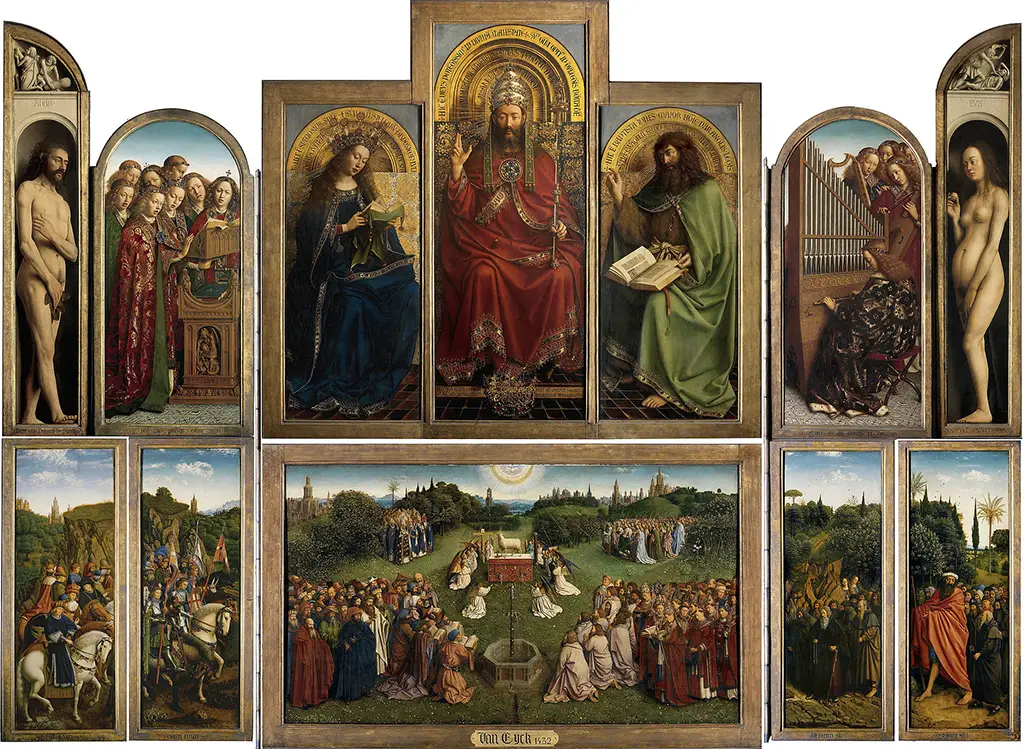
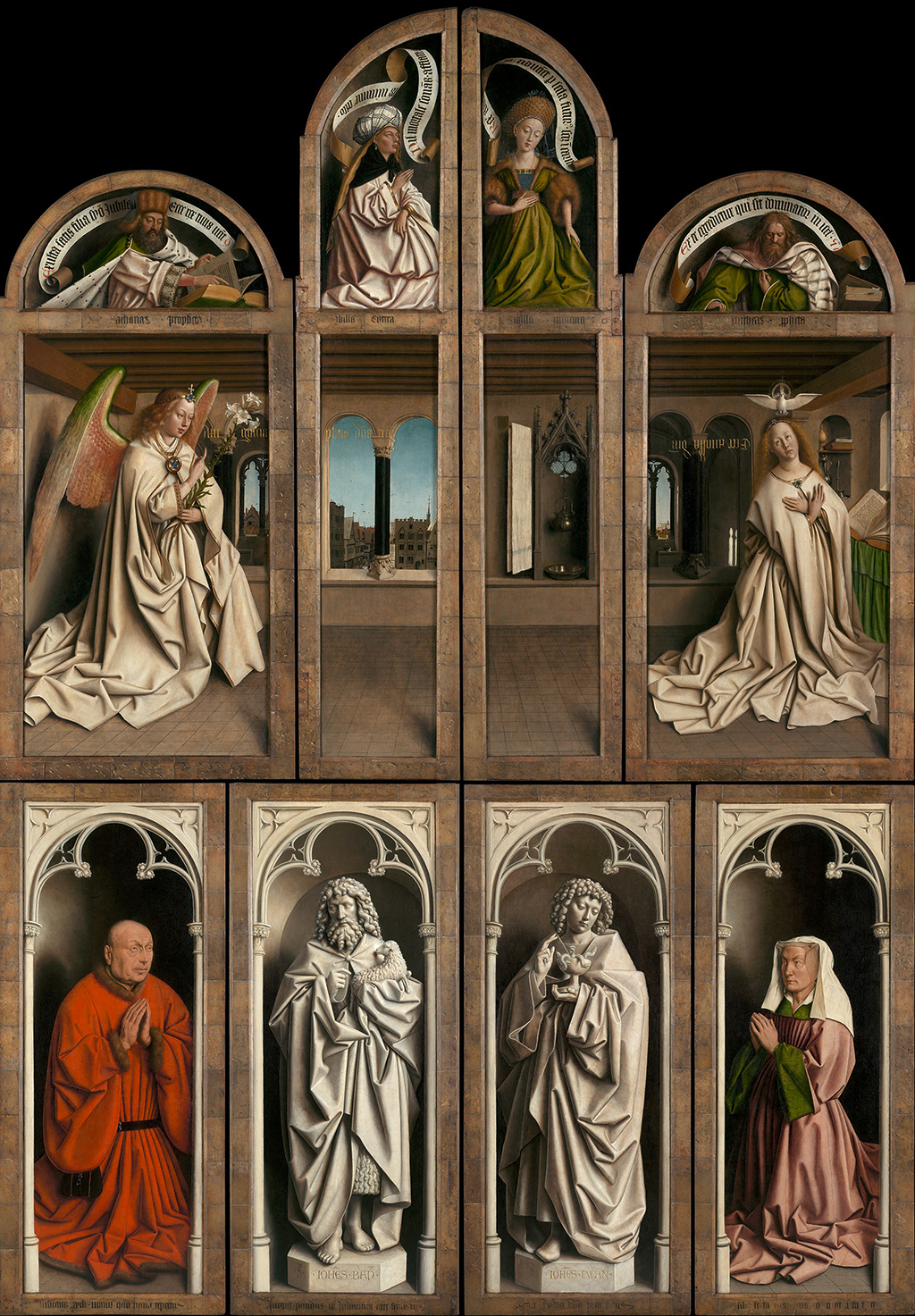



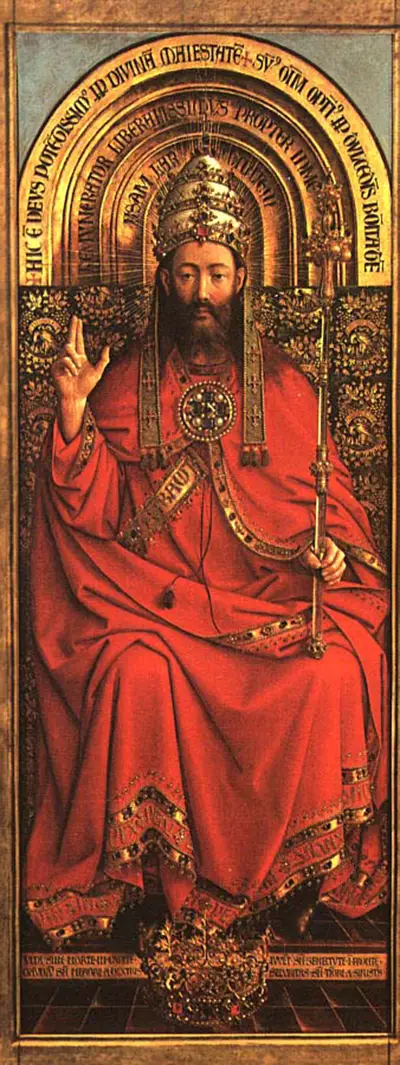
 Jan van Eyck.jpg)
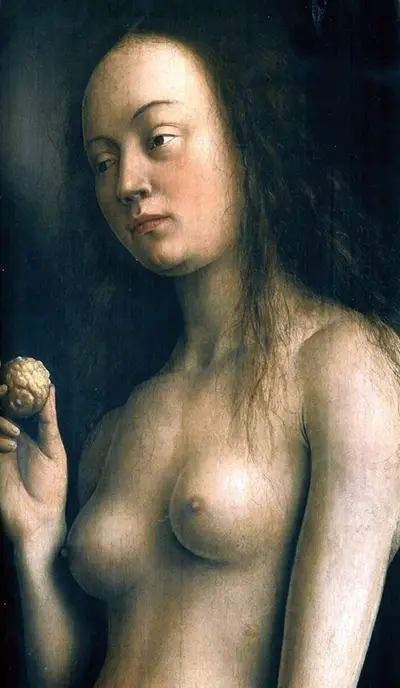
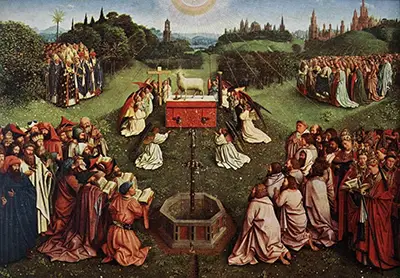
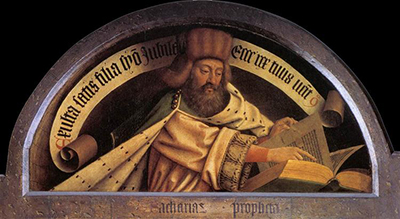
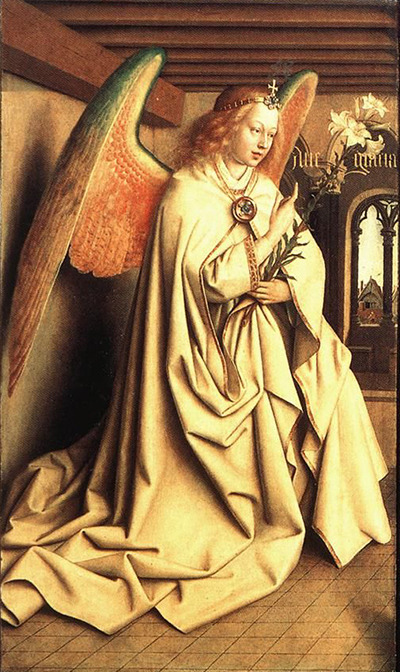
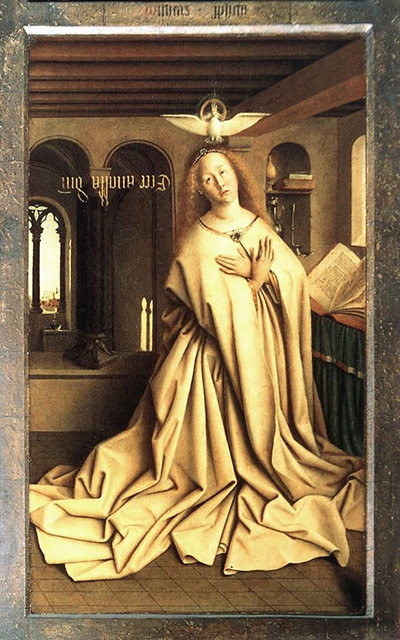
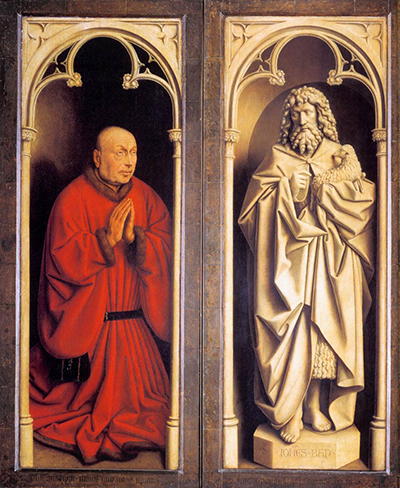
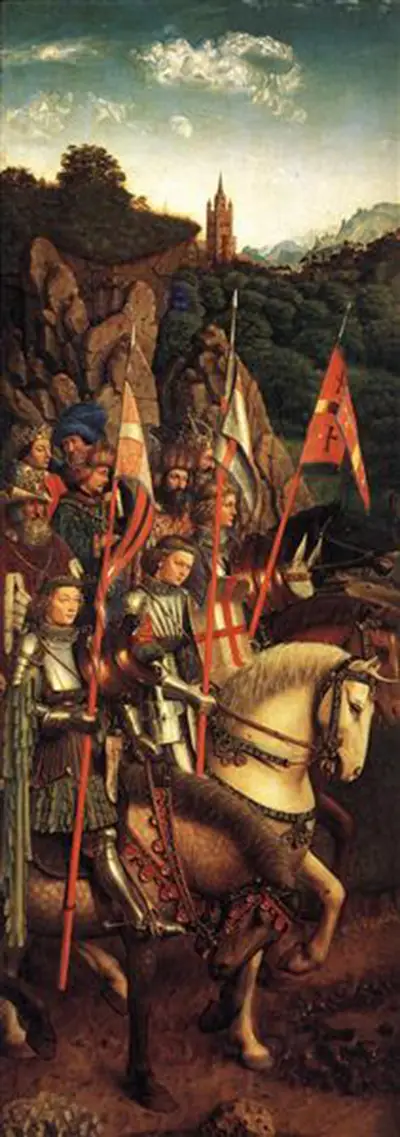
 Jan van Eyck.jpg)
